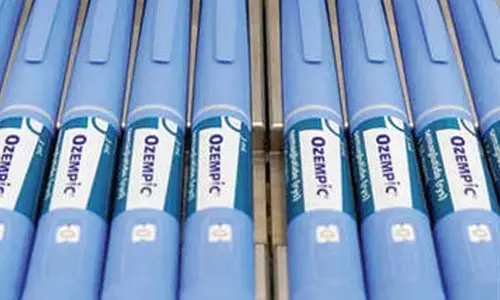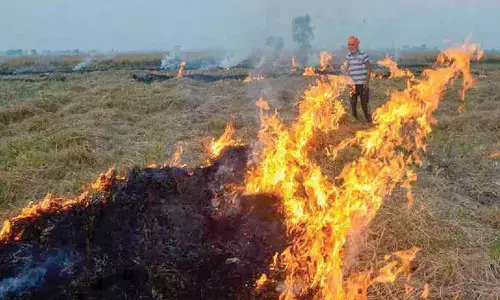Creating upskilling infrastructure to enhance skills of student

Growing up in an era where the world around us is changing dynamically, students today require a more diverse educational format than ever before.
Growing up in an era where the world around us is changing dynamically, students today require a more diverse educational format than ever before. The momentous shifts observed in the skill sets of young kids today need an equal or rather better teaching resource. This is why physical schools in India need to enhance their upskilling infrastructure in a way that enlightens the student for a futuristic education. It is only with the right steps and a cohesive system that can ensure the loopholes in the educational sector can be reversed and replaced.
Understanding excellence and gap areas
The new approach towards education system must ensure each child is confident and empowered for their unique skills. This process begins with the most crucial aspect - understanding the gap and excellence areas for each of them.
However, people and more specifically teachers are not able to fully understand the student. They often look at gap areas in isolation and marginalise the student for his or her weak areas, which inturn, severely affects their confidence. It is important for teachers to know that every child has gap areas and it is the teacher that need to develop strategies to identify these and come up with innovative techniques that help the child achieve a balance between his or her excellence and gap areas.
The reason these gap and excellence areas are often overlooked, is that schools and their curriculums are designed in a standardised manner to cater to large groups of students- because education is everyone's basic need. This is why individual potential of a child is not fully captured.
When it comes to making education experiential tracking these gap and excellence areas are the very first step that institutions need to take. A growing child changes dynamically as he/she is exposed to new environments, they develop skills that are unique and independent.
The annual report cards, however, overlook this dynamic growth and only focus on tracking the exam day performance and some macro attributes like motor skill development etc. Instead, the report cards also need to incorporate micro and macro traits/abilities like behavioural patterns, and mental health along with other crucial attributes including pattern recognition, numeric skills, problem-solving capabilities and more.
It is only when institutions identify the areas of strength and weakness in each student and know areas in which they exceptionally excel, can they work towards upskilling and begin to bridge the gap and create a platform that can provide students with all necessary resources.
Digital dashboard
Taking ahead the learning curve of a growing child, the next loophole lies in the lack of an easily accessible digital student dashboard. The implementation of the New Education Policy also encourages this alignment and one that can provide the framework for everyone involved, including the student, teacher, school, and policymakers, thus making the identification of teaching resources, tools, and technology required, a lot more easier.
Identifying the upskilling areas is not enough if this cannot be tracked over time. A digital dashboard would ensure each student has their progress in various domains, recorded and easily accessible to different teachers, mentors and schools, especially if the student decides to change schools or migrate. Once institutions have real-time records of each student, they can start to focus on developing and customising upskilling resources that further enhance their learning experience.
Introducing experts & sharing resources
Upskilling infrastructure can truly flourish when best resources are equally allocated to all irrespective of their geographial boundaries and one that caters to unique skillsets.
Since brick and motar schools have to focus on a larger group of students, they follow a standardised approach that imparts basic knowledge every student needs. However, when it comes to customising resources for student upskilling, it is important for institutions to build a community of experts that assist kids in their areas of excellence. Sometimes, expert teachers can only provide their knowledge online which is a great boon for institutions located in non-urban areas.
These institutions can come together and get expert consultancy for their students from the expert teacher. Moreover, these expert teachers can also train the local teachers to upskill themselves.
Deploying the right teaching talent based on the trends noticed in the digital student dashboard can thus extend additional support to bridge gaps or accelerate a student's growth in various domains that go over and above the standard classroom curriculum. These high-value partnerships could include national or international faculties, and hybrid modes of education to make sure the best resources are available to every child, irrespective of their geography. This can also be further shared with schools across the central/state/board level.
Customising the learning journey
Although many schools in the country are actively working on integrating futuristic and experiential learning experiences, one needs to understand that every student is unique and has distinct interests and talents that require a customised and expert learning platform. Hence, moving ahead in line with NEP, institutions need to work towards customising each child's learning journey right from students residing in urban cities to towns and even villages.
This fundamental shift toward bridging gaps in the upskilling infrastructure will enable students to access better learning formats and excel in ways that are in line with the dynamic skillsets and mental fabric required to navigate in this 21st century.
(The author is the CEO & Co-Founder, STEM Metaverse)




















